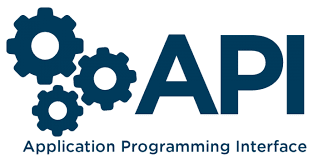What is API testing
API is an acronym in the form of Application Programming Interface, which defines how a component will communicate with the other. It is comprised of a set of protocols, routines, and connectors for the creation of software applications. API tests are a form of logical test that tests and validates whether an API has the necessary performance specifications.
This requires implementing an array of qualitative assurance steps to discover API design flaws, spot flaws or inconsistencies in expected outcomes, and collect feedback about an API function.
What is API testing? API Test is one kind of test software that is used to validate APIs (APIs). The goal for API tests is to confirm the capability, reliability performance, and security of API interfaces for programming. For API tests, the users input lists, as well as normal outputs for users (keyboard) outputs are sent to software. You use it to communicate with API applications, collect results and then take note of the system's response. API tests consist of three distinct GUI tests that concentrate on the look and feel of the application. They are primarily focused on the logical aspect in the enterprise of Software Architecture.
What exactly is API testing in basic terms?
API (Application Programming Interface) testing is a kind of test that checks whether APIs provide flexible support for the function as well as the performance, reliability and safety of an application. API tests can be utilized to establish the response (response) number. API testing must be compatible with the protocols as well as data format, and requires more expertise than GUI tests. If APIs connect (and provide some functionality) You will require someone who can comprehend the functioning of your application. The tester conducts API tests that are able to understand programming languages. API tests typically connect to a series of applications.
What is API testing? Are there any types?
There are a variety of layers within a typical application that include the layer of presentation (or the user interface) layer as well as the business layer along with the data layer, which is for creating the data and managing it. Testing APIs at the layer level - where the critical layer at which business or logical business process takes place, and all transactions occur through the interface used as well as the layer of database.
Different types of API testing
Functional test
This is testing certain features of the base code. These are the characteristics of specific scenes in order to verify it is that API functions are correctly implemented within the context of the earlier parameter.
Test of loading
The load tests are generally created following the completion of a particular piece or piece of base code has been finished. This test is to determine if the theoretical solutions function in the way that is expected.
The detection of runtime errors
This technique is focused on the the various elements that are involved that monitor, runtime errors and resource sources, as well as detection of errors.
Penetration tests
Penetration testing is regarded as an additional test to be performed in the audit procedure. This type of test lets users who have no knowledge of the API are attempting to evaluate the threat source from an external viewpoint and how it relates to the functions and processes, resources or even the overall company. API as well as its parts.
Test of quilt
It is the Fuzz test is a part of the audit procedure. In the fuzz test, many unrelated details (called "noise" or "fuzz") is fed into the system in order to identify forced crashes or other negative behaviour. This test method tests the limit that the API so that it can prepare the system the system for "worst scenes".
Unit examination
Security tests
Tests of the Web User Interface
Testing interoperability (SOAP only)
WS * Test for compliance (SOAP only)API testing can be divided into four main categories - manual testing, automated testing, web-based testing, and integration testing. Manual testing involves regular (usually weekly) or semi-weekly testing of code, infrastructure, or functionality; the outcome of such testing will provide feedback on functionality and code quality. Automated testing is an approach to testing software using step-by-step instructions or a predefined test case strategy. It is imperative to define test cases ahead of time to avoid repeating steps in a section of code. Web-based testing is the most effective approach to testing internet-based services, such as APIs, since it simulates real user interaction with the system. API developers need to create test cases based on actual usage scenarios to assess system functionality and detect bugs; successful testing results can significantly boost project teams.
There are several advantages of automated testing over manual testing. The most significant benefit is the reduction in costs associated with the latter. Since API developers typically outsource automated tests, they do not need to spend time and resources on manual testing. They can focus their time and resources on building and delivering new products.
Automated testing removes the need for human error and eliminates potential downtime issues. Before introduced automation, software testing required a lot of tedious tasks, including copy-testing, validation, and debugging of unit-testing and integration processes. A well-written automated test can easily handle the load, database coverage, usability, and security testing. Once the test code has been written, it can run automatically with a minimum of configuration requirements.
With test automation, developers don't have to wait for a complete acceptance to start getting results. Instead, they can start running the tests immediately after writing the code and getting feedback from testers and clients. Since the test cases are reported so that the developers can get quick feedback on the functionality of the software, test execution is much faster. It means that there will be a lesser need for additional time and resources for debugging and testing.
As previously mentioned, automated API testing minimizes potential downtime issues. There is less risk of integration testing for business processes, web services, or mobile apps with automated tests for modules and services. Since integration testing involves round-the-clock activities, the time spent on load testing is reduced significantly. In addition, automated testing allows for integration testing of legacy systems to create new test cases. What is more, the absence of human supervision in API testing prevents bugs from being regressions in time and space.
So far, this technology has been implemented in several projects worldwide. However, what is important to note is that we must do API testing manually to be effective. A manual testing process will only help the developers understand the behavior of the API rather than proving that the API is correct. Therefore, if you have an API to test, you should manually reduce misinterpretations and errors.
The most common tests executed by automated API testing are the protocol, documentation, and functionality tests. The protocol tests ensure that the application meets the expected results from different users. On the other hand, documentation and functionality tests ensure that the application meets the expectations of the end-users. Automated testing types can be categorized as follows:
What is API testing? GUI or Graphical User Interface Testing is a type of testing that proves the compatibility of an application with different user interfaces such as Java, XML, Win32, Flash, etc. What is essential is that the testing must cover all the screen views and screen coordinates in the application so that the end-user can enjoy the application thoroughly. What is necessary is that the user experience should not be compromised. In addition, you should also consider performance testing as it is also an essential aspect of web testing.
For more amazing Blogs visit- The Tech Journal
For more details on AI Automation visit - The Tech Journal



Comments
Post a Comment